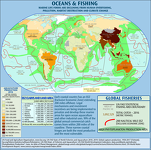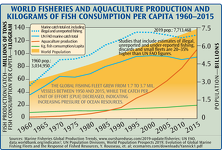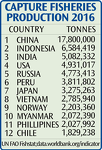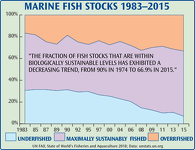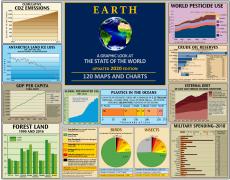Table of Aquaculture Production by Country
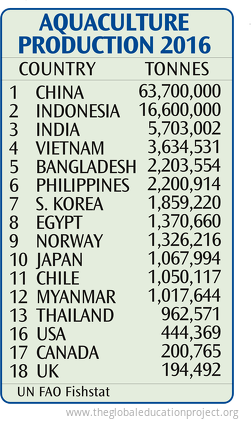
AQUACULTURE is the industrial farming in fresh or salt water of fish, mollusks, crustaceans and plants.
Aquaculture is rapidly increasing its annual global harvest and seems to offer hope for increased food production. However, for some of the more than 210 farmed aquatic animal and plant species, particularly salmon and shrimp, the methods currently used require high energy inputs and can cause environmental degradation similar to industrial/chemical agriculture or factory farming of livestock. These include loss of natural habitat, loss of genetic diversity, and replacement of self reliant indigenous fisheries with multinational corporations. Pollution from concentrated sewage can smother the benthic (bottom dwelling) organisms, over-fertilize the water and lead to toxic algae blooms. (A single fin fish farm may output as much daily sewage as a small city.)
High stress overcrowding contributes to epidemic disease remedied by routine vaccinations and antibiotic treatments, cultivating drug resistant pathogens and impacting other aquatic wildlife.
High concentrations of pathogens/parasites on the farm can infect the natural environment threatening local species; escaped domesticated farm fish can threaten local species with extinction through genetic pollution.
2005 version of this table
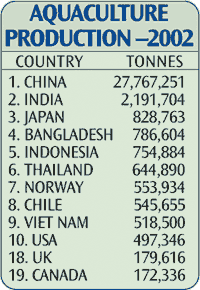
Sources
Tags: aquaculture production, fish farms, pollution from fish farms, environmental impacts of aquaculture and fish farms, aquaculture production by country, fisheries-and-aquaculture
Sign up for EARTH Dispatches
Enter you email below to get jaw dropping charts and maps delivered straight to your inbox.
Get the EARTH presentation
A 150 page high-resolution PDF containing all updated maps, charts and data on EARTH website; use as an information-packed educational slide show, printed booklet or a set of single-page handouts.
Learn More
